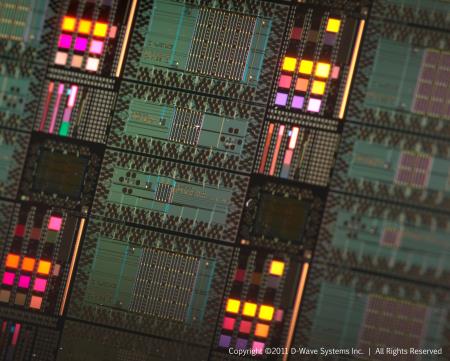(A D-Wave processor)
For out of this world problems researchers at the U.S. space agency are turning to an out of this world computer from a Canadian company.
D-Wave Systems Inc. of Burnaby, B.C., said Thursday that one of its 512-qubhut quantum computers has been bought for installation at the new Quantum Artificial Intelligence Lab at NASA’s Ames Research Center in California.
The lab is a collaboration among NASA, Google and Universities Space Research Association. The association will make 20 per cent of the system’s time available to university researchers.
The goal is to use quantum computing to advance machine learning to solve some of the most challenging computer science problems, the parties said in a news release.
These include Web search, speech recognition, planning and scheduling, search for exoplanets and support operations in mission control centers.
Installation of the D-Wave Two system will take several months, but the system is expected to be online in the third quarter.
“We are extremely pleased to make this announcement,” D-Wave CEO Vern Brownell said in a statement.
“Three world class organizations and their research teams will use the D-Wave Two to develop real world applications and to support research from leading academic institutions. This joint effort shows that quantum computing has expanded beyond the theoretical realm and into the worlds of business and technology.”
The D-Wave Two uses a superconducting processor leveraging quantum mechanics to massively accelerate computation. The company says the 512-qubhut CPU is housed inside a cryogenics system within a 10 square meter shielded room.
Unlike conventional computers, which process data as zeros or ones, D-Wave says the qubits in its quantum processor stores a piece of information either as a 0, or a 1, or – using quantum mechanical effects – as a superposition of both 0 and 1 at the same time. Couplers try to force the two qubits to which they are joined to either be in the same states (for example 0,0 or 1,1), or opposite states (0,1 or 1,0), depending upon how they are programmed. Digital-to-analog converters and a device addressing system (bus) allows each qubit and coupler to be programmed.
